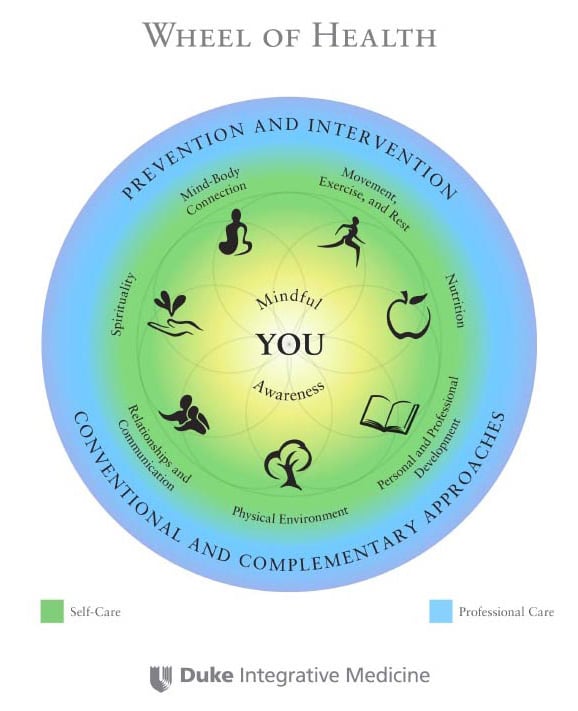Integrative Health|Nutrition
A Guide to Optimal Wellness in the Childbearing Year

An introduction: Why you should stay tuned
If you are pregnant or thinking about becoming pregnant, you are on an exciting journey! You are probably experiencing a range of emotions as you ask yourself, “What can I do to help ensure that all will be well with my baby and with me?” That’s a key phrase, isn’t it: to “be well.” And that is exactly what you and I are going to talk about in this series where I will share resources with you that will guide you to a state of abundant health throughout your pregnancy and beyond.
You have a say!
You and I know that the choices we make about our health and wellness have an impact on our wellbeing, but did you know that genetics are only responsible for 20% of premature deaths in the US and that 50% can be sourced to how we eat, exercise and manage stress? You will no doubt ponder and worry over your own genetic history and how it will affect your baby, but know that you have much more control over your health and the lifetime health of your baby than you may think.
We also know that your healthy diet, exercise and stress management approach can reduce your risk for preterm birth (Villar, 1998 Sep; 53), gestational diabetes, hypertensive disorders, and perinatal mood disorders (Kendall-Tackett). The risk of related delivery complications such as inductions, instrumental delivery and cesareans can also be reduced. Further, your postpartum recovery and wellbeing are also impacted by these factors. The good news is that diet, exercise and stress management is under your control—you have a say!
Okay, so why don’t I hear about this during my prenatal visits?
That’s a good question. It may be happening slowly, but we are moving towards redefining the priorities that will transform our health care system, including prioritizing the factors that optimize wellness in your childbearing year and beyond. Our existing health care system largely focuses on fixing rather than preventing what goes wrong, but momentum is building to invest in a model founded on an understanding of health and wellness that emphasizes prevention (Woolf, 2009; 301 (5)) (Woolf, 2009; 301 (5)). This won’t happen overnight, but in the meantime, you do have the opportunity to learn about and integrate strategies for optimizing your health right now. In this blog series we are going to talk specifics so that you can make informed choices about what is right for your own and your baby’s wellbeing.
Integrated Wellness and the Wheel of Health[i]: My approach
I appreciate that during your childbearing year you may be engaging with health care systems more often and in greater depth than you have in the past. As the founder of Birthways, I’ve been able to help families navigate the maternity care system by employing an informed, partnering approach when working with families’ health care teams. This approach is based on my belief that we all strive to share responsibility for our health and for our pregnancy/childbirth outcomes. It is from this place that we will begin our discussion. While we will talk a bit about the “system,” our focus will be more about you and the ways you can be a healthy, low- or reduced-risk mom!
Inviting you to make connections
What does it mean to have an “integrated” perspective on wellness? Learn more about some terms commonly used in health care, such as “complementary,” “alternative” and “integrative” medicine.
Moving beyond the NIH definitions, I want to add that you do not need to be interested in “alternative” medicine to benefit from viewing your health from an “‘integrated” perspective. Your life and wellbeing is already structured to be a whole and inter-related matrix. In the posts to come, we are going to make some of those connections together. Here are some examples of what I am talking about:
- Your diet choices are often related to how your work life is structured.
- Your supportive relationships have a direct impact on reducing your risk for adverse outcomes like heart disease and for positive outcomes like increasing your life expectancy(Compare, 2013) and for increasing the likelihood that breastfeeding your baby will be successful (Krishna Raj, 1998 14: 41).
- Exercise and your ability to get good restorative sleep depend in great part on how accessible fitness space is within or near your home and how comfortable your bed and sleeping space are.
- The symptoms of depression and anxiety are reduced by exercise and restorative sleep. Conversely, struggling with depression and anxiety influences our ability to sleep well or be interested in making positive health decisions.
- If you are experiencing chronic stress, you are more likely to succumb to cold and flu viruses and have an increased risk of diabetes, cardiovascular disease, obesity and stroke. (Cohen S, 2012). (McEwen, 2002)
These are the kinds of things I will refer to when we talk about an integrative approach to your wellbeing in pregnancy.
I want to extend an invitation to you to live in accordance with who you are and what makes you thrive. This means embracing a larger view, a view that encompasses every aspect of your life. This, I believe, is the key to building a healthy, holistic and integrated plan for your health and the health of your child!
The Wheel of Health
Created by the experts at Duke Integrative Medicine, the Wheel of Health represents a new vision for health care systems based on current understanding of the role of prevention on health outcomes. It also serves as a tool for self-assessment of our wellbeing and a roadmap for planning our own health outcomes. Duke’s model includes an initiative to increase individual health planning for all stages of our lives, much as we plan for our careers, our retirement, or say, having a baby! So this time of transition in your life is not only an opportunity to plan for a healthy pregnancy, but also an opportunity to plan for a lifetime of health for your little one and for you as parents.
The Wheel of Health reminds us that YOU are at the center of your health and that how you live can support or challenge your health depending on what might be happening in this moment. “Professional care” or the doctors, midwives, acupuncturists, doulas or whomever you choose as your practitioners are in the position of lending you support. Professional Care includes both Western and complementary therapies and their purpose is to see that you stay healthy (Prevention), as well as to treat any conditions that may arise (Intervention). Mindful awareness is the foundation from which we are able to identify our health needs and address them with compassion and a non-judgmental frame of mind. Practicing mindful awareness can lead to making the life changes that lead to greater health.
In the posts to come, we will talk about how you can create your own “wheel of health” that includes nutrition, physical activity and rest, personal and professional development, mind/body connections, spirituality and relationships.

Coming up: An introduction to nutrition in your childbearing year
There is much more to say about the Wheel of Health, but first we’re going to talk about what’s for dinner (and breakfast…and lunch!) for you and your baby. So stay tuned for my next post where we will start the discussion about a healthy diet during this important time in your life.
__________________________________________________________________________________________
(USDA)., U. D. (2005). Dietary guidelines for Americans, 6th Ed. Washington, D.C.: U.S. Government Printing Office.
Bendich, A. &. (2009). Preventative Nutrition: The Comprehensive Guide for Health Practitioners 4th Ed. Parsippany, NJ: Humana Press.
Cohen S, J.-D. D. (2012). Chronic stress, glucocorticoid receptor resistance, inflammation, and disease risk. . Proceedings of the National Academy of Sciences. 2012; Epub ahead of print. , http://nccam.nih.gov/research/results/spotlight/040212.
Compare, A. Z. (2013). Social support, depression, and heart disease: a ten year literature review. Front. Psychol., 01 July 2013 | doi: 10.3389/fpsyg.2013.00384 – See more at: http://journal.frontiersin.org/Journal/10.3389/fpsyg.2013.00384 , http://journal.frontiersin.org/Journal/10.3389/fpsyg.2013.00384/full.
Harrison, G. G. (2010; 32). Public Health Interventions to Combat Micronutrient Deficiencies. Public Health Reviews , 256-266.
Kendall- Tackett, K. Depression in New Mothers.
Krishna Raj, V. &. (1998 14: 41). The Role of Social Support in Breastfeeding Promotion: A Literature Review. Journal of Human Lacation , http://jhl.sagepub.com/content/14/1/41.full.pdf+html.
McEwen, B. &. (2002). The End of Stress as We Know It. Dana Press.
Medicine, I. o. (2001). Crossing the Quality Chasm. Washington, D.C. : National Academies Press.
Organization, W. H. (2000). Obesity: preventing and managing the global epidemic. World Health Organization.
Public, C. o. (2005). Complementary and Alternative Medicine in the United States. Washington, D.C.: National Academies Press.
Sui, Z. &. (2013). Exercise in obest pregnant women: positive impacts and current perceptions. International Journal of Women’s Health , 389-398.
Villar, J. G. (1998 Sep; 53). Nutritional and antimicrobial interventions to prevent preterm birth: an overview of randomized and controlled trials. Obstet Gynecol Surv. , 575-585.
Villar, J. M. (2003, May). Nutritional interventions during pregnancy for the prevention or treatment of maternal morbidity and preterm delivery: an overview of randomized controlled trials. Journal of Nutrition , 1606S-1625S.
Woolf, S. (2009; 301 (5)). A Closer Look at the Economic Argument for Disease Prevention. JAMA , 536-538.
https://www.prevent.org/data/files/initiatives/woolf2-4-09slides.pdf ((USDA)., 2005)





























